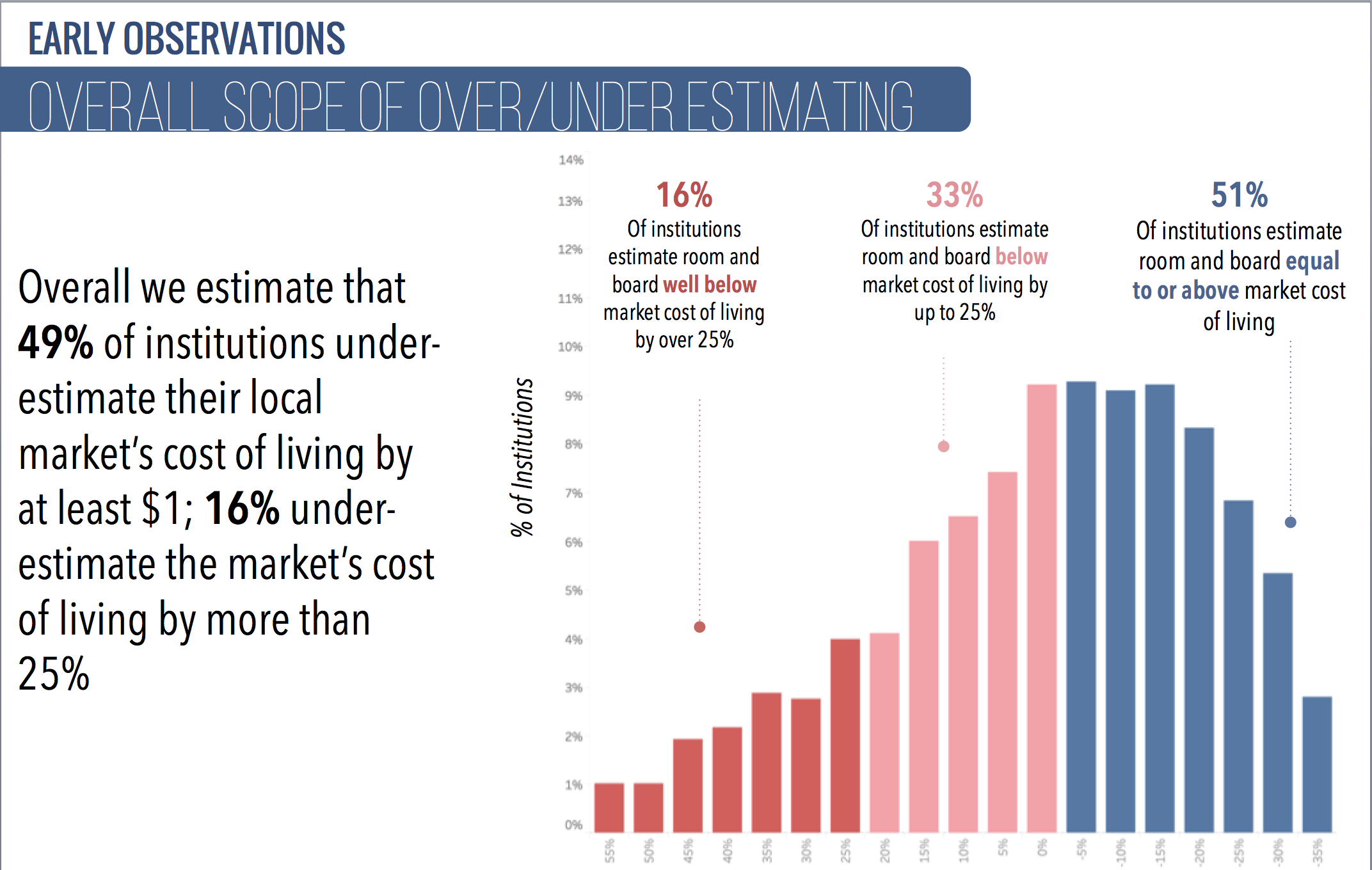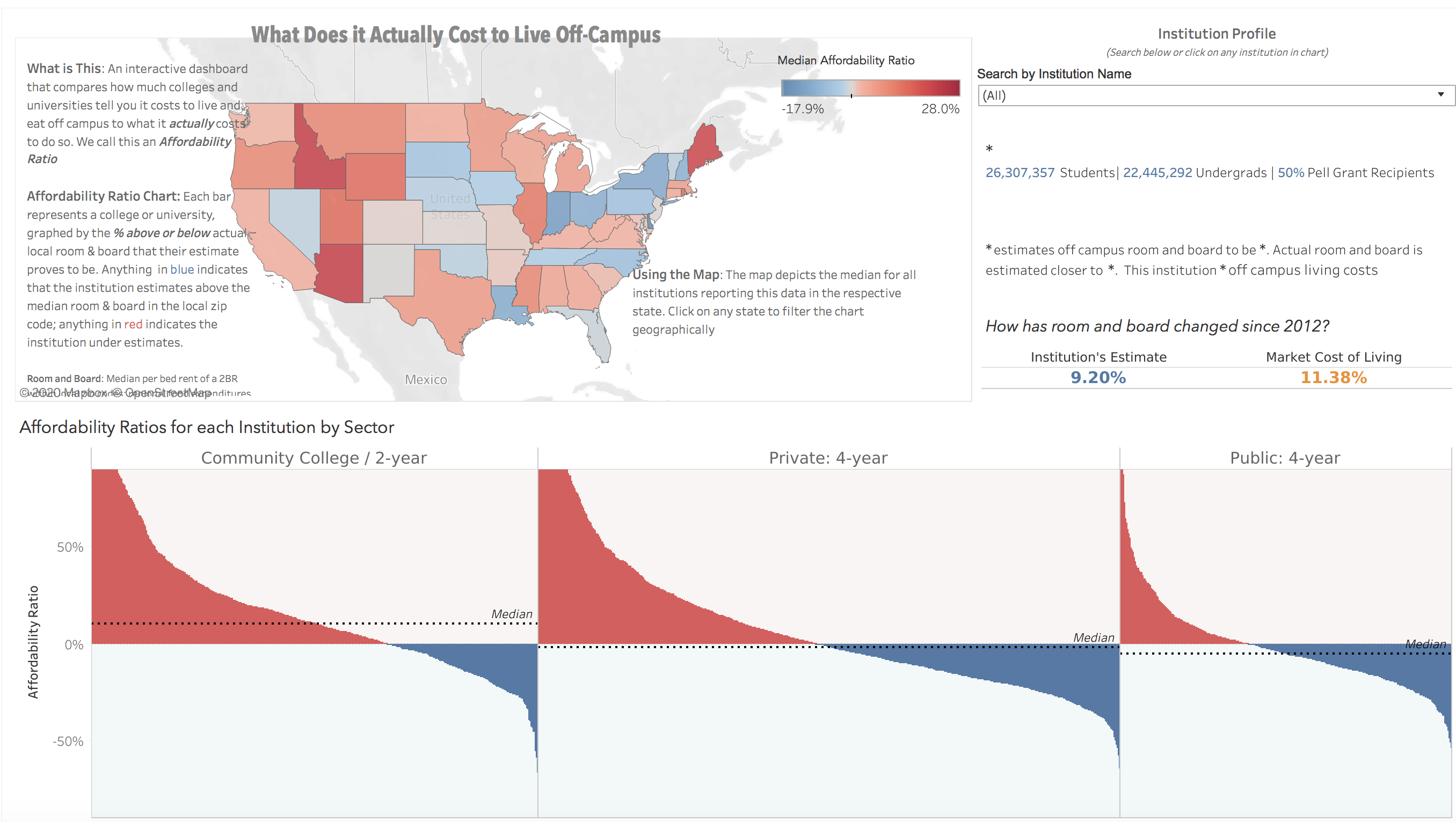Examining the impact of cost of living estimates on student access to affordable, secure housing
College students in the United States face mounting challenges to academic success: increased tuition, decreased financial aid, financial distress of their institutions, and, now of course, the impact of COVID-19 on all aspects of the social-academic experience. In this context, housing insecurity has only recently drawn the national attention that it deserves, despite steadily growing urgency. Since 2019, U3 has been studying strategies to understand and tackle housing insecurity through research into the 4,000+ higher education institutions across the country.
Collaborators
-
Danielle RobinsVice President
-
Tatianna SwendaSenior Associate
-
Shea O'NeillVice President
The Urgent Need to Address Student Housing Insecurity
Students without secure housing face high barriers to succeeding in or completing their studies, highlighting fundamental inequities in the higher education experience. Housing insecurity disproportionately impacts students of color, low-income students, as well as older students. Students may experience housing insecurity through circumstantial conditions (e.g. a student’s living situation becomes unsafe for several months) or, most commonly, private market-driven causes (i.e. rent spikes). A growing body of scholarship links housing insecurity to academic performance.
Dr. Sara Goldrick-Rab, now at Temple University, has led research efforts to highlight this critical topic. Her teams have surveyed thousands of students at two-year and four-year institutions across the country. They found that in 2018, 36% of students at four-year institutions and 46% of students at two-year institutions faced housing insecurity. 9% of four-year and 12% of two-year college students experienced outright homelessness.
Financial Aid & Costs of Living
While the principal drivers of student housing insecurity relate to the overall high cost of higher education, especially for low-income or first-generation students, specific institutional policies affect the problem as well. One important, yet less studied, factor is the method institutions use to estimate the costs of living off campus – which can negatively impact a student’s total aid package.
Generally, a student’s financial aid may not exceed the cost of attendance, typically calculated as the total of tuition, the estimated cost of living on or off campus, and additional fees. Colleges and universities are given broad latitude to estimate the cost of living as they see fit. Some colleges can feel incentivized to underestimate, as higher costs of living could cause a reduction in applications or a slide in national rankings. As a result, if a school underestimates local costs of living, then students in need may not receive the adequate amount of aid needed to cover basic living expenses.
Research Process & Findings
U3 Advisors sought to track each school’s estimated cost of living against market data of rents near each respective school. U3 Advisors mapped 4,000+ public, not-for-profit and community colleges across the United States and compared them with an estimated cost of housing and food, using data from the Census, Zillow, and Consumer Expenditures Survey. We translated our findings into an interactive dashboard that is available for public use.
Our key findings include:
- As many as 49% of schools underestimate costs of living.
- Almost 20% of all schools underestimate costs of living by over 25%.
- Schools who enroll more low-income students are more likely to underestimate the costs of living.
- Schools in the same geography can widely “disagree” on what it costs to live there. In one example, two schools that were practically on the same street in Massachusetts varied their estimates by almost $10,000.
U3 Advisors’ Tatianna Swenda and Danielle Robins presented this study of student housing insecurity at the 4th annual #RealCollege convening – focused on addressing student food and housing insecurity – in 2019.
Explore and compare estimated costs of living and actual market costs at 4,000+ institutions.









Solutions
Fortunately, there are steps that schools can take to mitigate these issues, many of which are documented through Dr. Goldrick-Rab’s work.
At a minimum, schools need to engage with better data. This begins with a thorough evaluation of off-campus living costs that uses actual market housing data.
Schools should also track and understand the decisions their students are making, such as by regularly collecting address data and mapping where students live, what they might pay, and how they commute.
Finally, schools can take a direct stand to influence the supply and demand of affordable housing. On the supply side, schools can engage mission-sensitive developers to build mixed income housing on or near their campus. On the demand side, schools can design housing incentive or financial aid programs for qualified students that will offer additional stipends to rent near campus.
Without working towards ensuring all students have access to secure and safe housing near campus, schools risk exacerbating the inequities that their students face.



